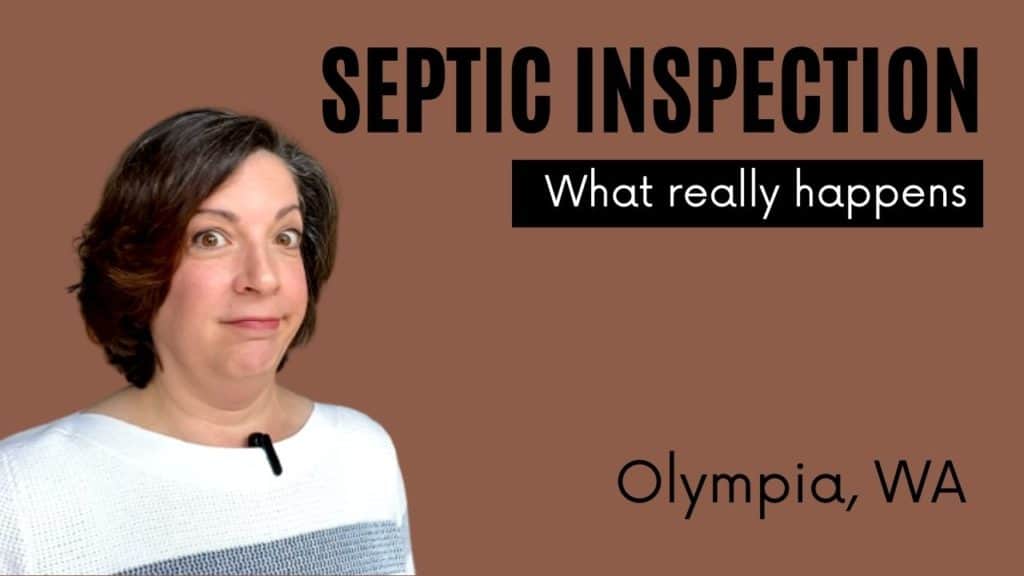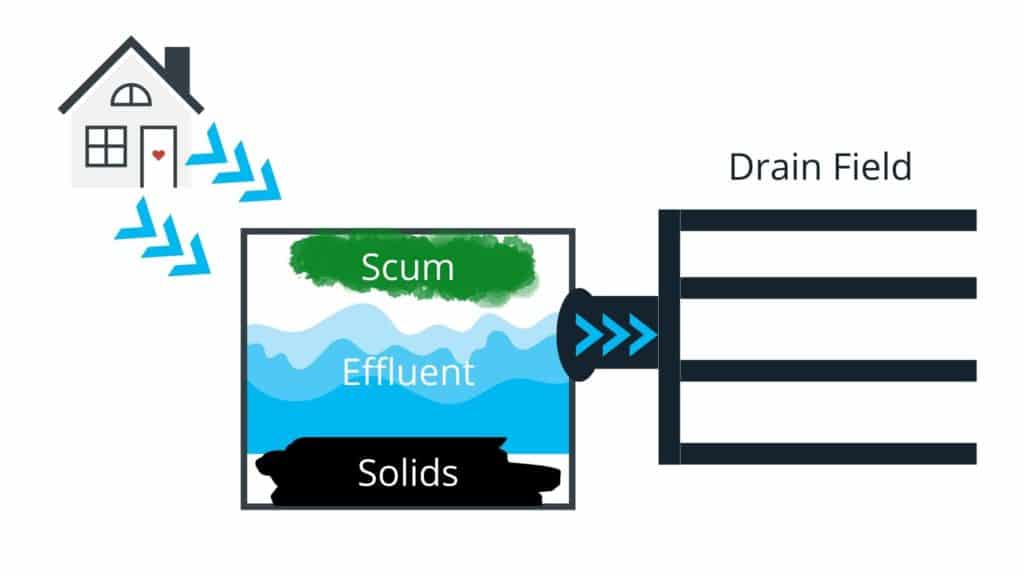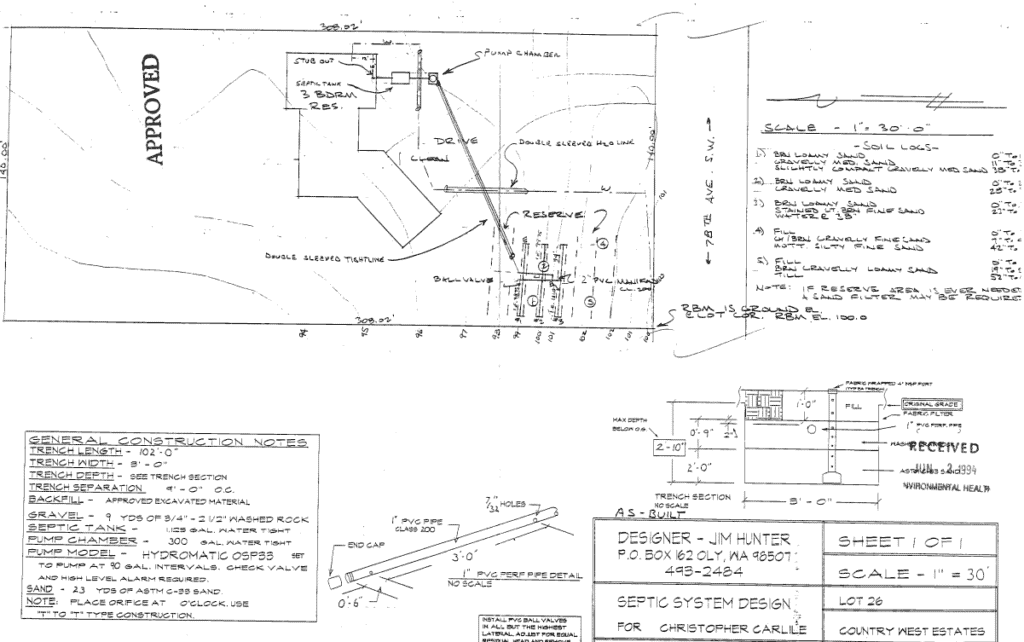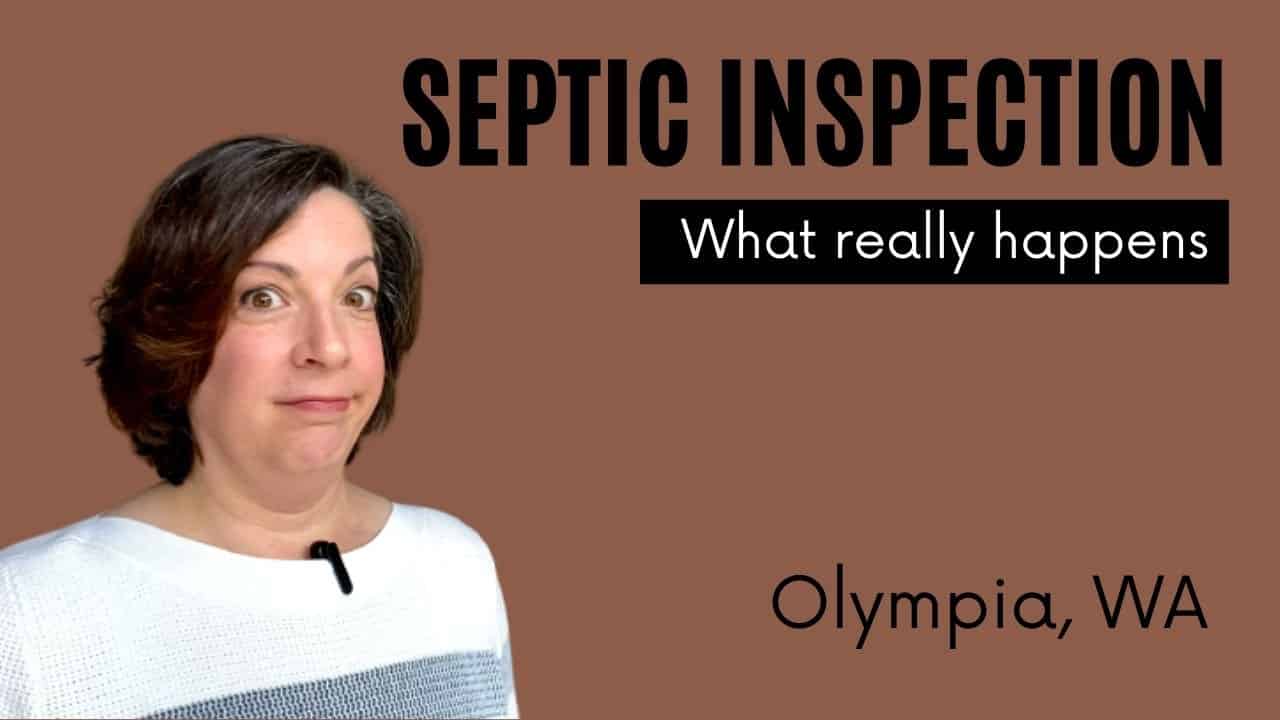
Here’s the video of a septic inspection I attended recently. The technician, Marcello from Goebel Septic Tank Service was kind enough to explain how the system works. Be sure to check it out!
Many homes in the Olympia area will have a septic system. If you’re not used to this or familiar with it, it’s not something to be afraid of and it shouldn’t be a deterrent when shopping for your next home.
A study done in 2016 stated that there are about 53,000 septic systems in Thurston County. According to the 2019 census, there are about 112,000 households so a home on a septic system is rather common here.
How does a septic system work?
When I first moved here to Olympia, I had no idea what a septic system was and how it worked. For some reason, I thought only the water from the toilets went to the septic tank but in fact, ALL of the household water and everything else that goes down a drain or a toilet goes into the septic tank.
The solids sink to the bottom and the liquid goes out to the drain field.

Here’s my fancy drawing showing the household water entering the tank. The solids sink to the bottom of the tank; lighter “stuff” floats to the top as a scum layer, and in the middle is the liquid called effluent. The effluent flows into a second chamber for a second filtering out of the solids and scum and then it goes out to the drain field. The solids and scum are what is pumped out of the tank (every 3 to 5 years) and the effluent goes to the drain field.
The Drain Field
The drain field is a very important component and the most expensive component to remedy if it fails.
The drain field is comprised of long pipes with holes. The liquid seeps out of these holes and is sanitized as it filters through the sand. These pipes are not buried deep – usually about six to twelve inches, so this is why it is so important to know where your drain field is to protect it.
Unfortunately, some homeowners have destroyed their drain field by driving over it, building structures or impervious surfaces over it like a sports court, or planting trees or shrubs with roots that can clog the drain field pipes. You want to keep this area clear so that the drain field can do its job of managing the wastewater.
The other way drain fields can get damaged is if scum and solids get out of the tank and into the drain field lines. This can cause the septic contents to back up into the home and can also cause a soggy, smelly drain field.
Transactions with homes with septic systems
For a real estate transaction, the seller is to pump and inspect the septic system at their cost. They also are to send this report to Thurston County for their review and this report is called the Time of Transfer. In a real estate transaction, the buyer will need this Time of Transfer paperwork in order to close on the sale.
For sellers, I recommend they do this before listing their home as the process of scheduling the pumping and inspection and getting the Time of Transfer paperwork from the county can take a few weeks.
What is an As-Built?
When a septic system is installed, the installer will provide a drawing showing the location of the tanks and the drain field. This drawing is called the as-built.
Not all drawings will look like this:

Most times the drawing will look like this:

It is also common not to have a drawing at all. In this case, the current septic pumper will determine the drain field location and provide a drawing.
Where can I find septic records and as-builts?
If you were interested in doing your own research, you can find these records at www.onlinerme.com.
Tips for maintaining a septic system
- Have a professional septic pumper pump and inspect your system every three to five years.
- Use less water. By reducing the amount of household water you use, you can increase the lifespan of the system. Too much water may not allow enough time for the liquid and solids to separate causing the solids to pass to the drain field, which can clog the drain field, and that is really bad!
- Keep sprinklers and extra water off of the drain field.
- Do not drive your car or anything heavy over the drain field.
- Don’t add septic additives. Septic pumpers say these additives can destroy the good bacteria in the system.
- Don’t put strong cleaning products down the drain like bleach.
- Only flush toilet paper and human waste.
- Limit garbage disposal use. Many pumpers will advise not to have a garbage disposal at all.
With proper care and regular pumpings and inspections, your septic system can last for decades.
S.T.E.P. Systems
A STEP system stands for Septic Tank Effluent Pump and is a hybrid septic and sewer system. Homes with a STEP system will have a tank buried on the property but instead of the liquid (effluent) going to a drain field, it goes to the city sewer. It is very common in the Olympia area to have homes on a STEP sewer system.
The city maintains the entire system and homeowners are billed monthly. There is no need for the tanks to be pumped by the homeowner – the city does this. And there is not a Time of Transfer report required for homes on STEP systems.
If you are considering making a move, contact me today!

